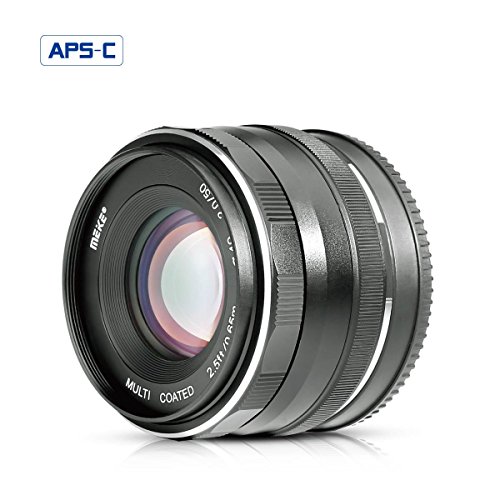A beautiful Japan-made 28mm lens, the Sigma Mini-Wide 28mm is a well-constructed lens that will give you joy every time you use it. Its strongest feature is its incredibly near focus, aside from the wide angle, of course. With a focal length of 28mm, the Sigma Mini-Wide is perfect for any classic lens collector who is also into macro photography. Here is a simple method of using Manual lens on DSLR, did this with Nikon D5200 & Canon EOS 350D Cameras & Nikon SB-24 Speed light Settings with Camera: # Set the camera in M mode, # Set ISO as wish and switch off Auto ISO, # Set lens F as wish, # Focus manual with Camera assist green dot, # Set shutter speed 1/100 or above.
Autofocus just keeps getting better. With every new model, more advanced technology allows cameras to quickly pinpoint the subject you're focusing on without missing the moment.
You're probably wondering, then, what this guide is all about.
No matter how good autofocus is, there are still times when manual focus is the better shooting option. When used in the right scenario, it gives a photographer more control over the photo, and in some cases, achieves effects that aren't otherwise possible in autofocus mode.
At first, you're going to feel like manual focusing takes too long. You'll wonder how people ever lived without autofocus. But with just a little practice, manual focusing becomes easier, faster, and the payoff more obvious.
Switching to manual focus
Manual Focus Forum
No matter which shooting mode you're in -- from Automatic to Program or Manual -- you can shoot in manual focus mode.
On the side of your lens, look for a switch labeled 'AF - MF,' which is short for Autofocus and Manual Focus, respectively. When you're ready to shoot in MF mode, switch your lens to that setting.
At this point, half-pressing the shutter -- what you'd normally do to find focus in AF mode -- is a useless action. Adjusting your focus must be done using the focus ring on your lens. If you have a zoom lens, you should have two rings: a zoom ring closest to the body of the camera, and a focus ring toward the end of the lens.
As you turn the focus ring, you'll see different parts of the shot come into focus. The point at which an object comes into focus correlates with its distance from the lens. In fact, if you look at the top of the lens while turning the ring, you'll see the numbers in the window changing -- the distance in feet or meters that the lens is focused on.
Some advanced or studio photographers actually use these careful measurements to focus on their subjects, literally measuring the distance from the subject to the lens to find the perfect focus. (This is especially useful for photographers shooting product photos in a fixed studio set.)
Meike 35mm F1.7 Manual Focus Prime Lens Review
But in most cases, while you're shooting in 'the field,' precise measurements aren't an option. Instead, you'll need to trust your own eyes to make sure your subject is in focus. Luckily, there are built-in tools to help you do that.
Checking your focus
Here are the basic steps to getting the most precise manual focus:

- Turn the focus ring until your subject sharpens.
- Switch your camera to live view mode (where the LCD is your viewfinder).
- Tap the magnifier button to zoom in on your subject, and use the arrows on your camera to move the area of view. (Alternatively, move your camera to frame the subject, and re-compose.)
- Fine-tune the focus until the subject is crystal-clear.
- Tap the magnifier tool again to exit back to normal view before capturing your photo.
When to use manual focus
Though you can use MF at any time, there are a few specific scenarios that really benefit from it. Often these scenarios are a challenge for autofocus, wherein it either focuses on the wrong subject, or simply can't find focus. Here are a few examples:
Macro. When shooting macro, where the depth of field is so shallow, it's important to have complete control over what exactly is in focus. It's also apparent that autofocus is challenged by macro shots, and spends too much time looking for the focus point.
Manual Focus Lens Forum
Crowded settings. If you're trying to shoot a subject in a crowded settings of similar objects, the camera might have a hard time identifying exactly what you're trying to shoot. For example, many blades of grass.
Manual Focus Ring
Shooting 'through' an object. You can achieve really striking photos by keeping the object closest to the lens out of focus, and focusing in on a subject further away. In this case, use manual focus to ensure the further-away object is the one in focus.
Low light. If your lens has a smaller aperture, it's going to be difficult to autofocus in dimly lit scenes. So switch to manual focus, and be sure to hold the camera very steady when you get your shot.
Street photography. As Yanidel points out, locking your focus and aperture allows you to shoot continuously without changing either one of those settings. She explains, 'You could spend a whole day without any need to focus your camera by setting the focus ring on 3 meters and the aperture on F11. Then everything between 1.8 and 7 meters would be in focus.'
Nikon Manual Focus Lens Reviews
Landscape. When shooting scenery, autofocus will often find something in the foreground, leaving the rest of the scenery blurred, or at least slightly out of focus. In this case, focus on something far in the distance while you're in autofocus -- this will force your lens to focus on infinity. Then, lock that focus by switching to manual before snapping your photo.